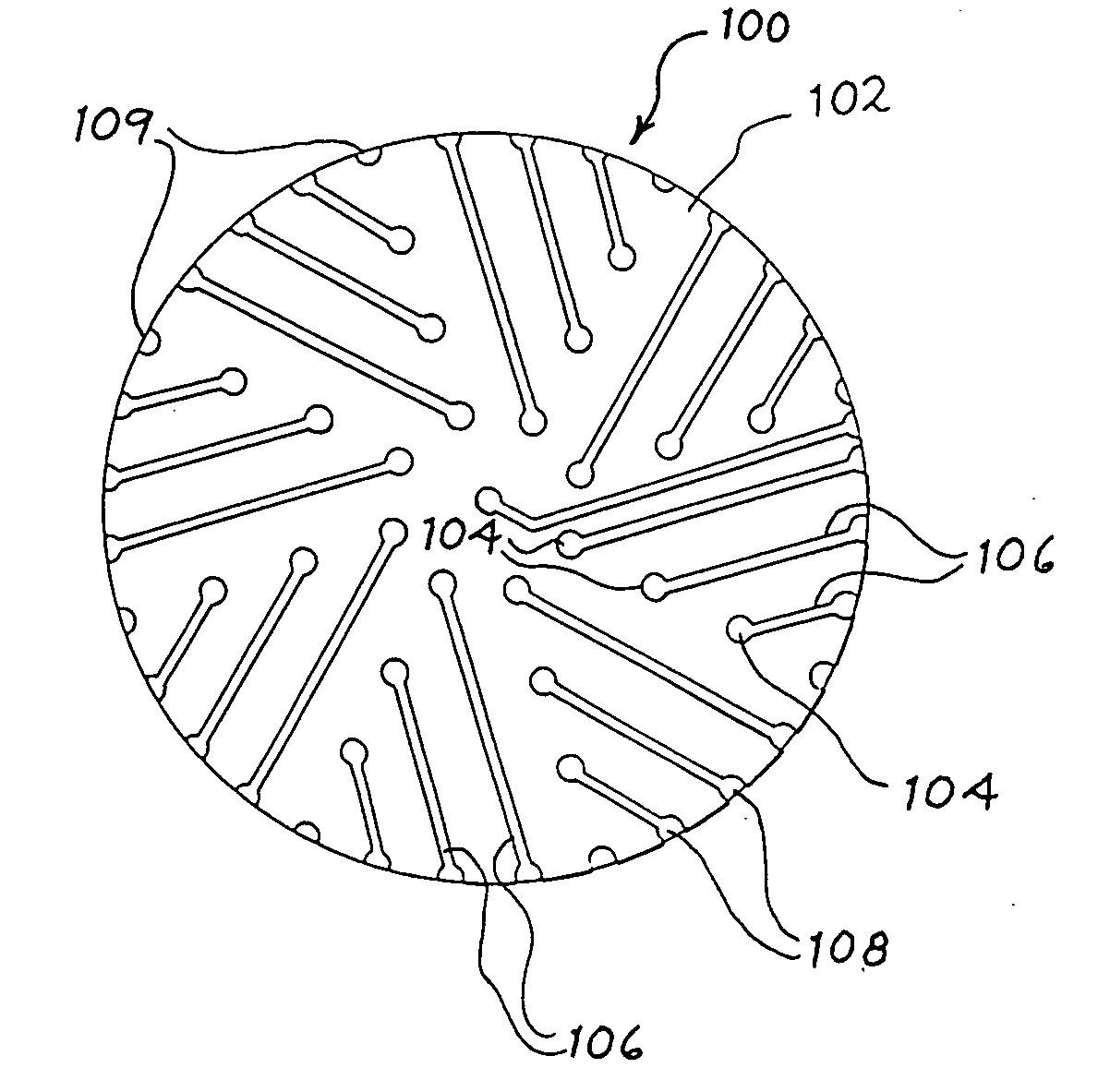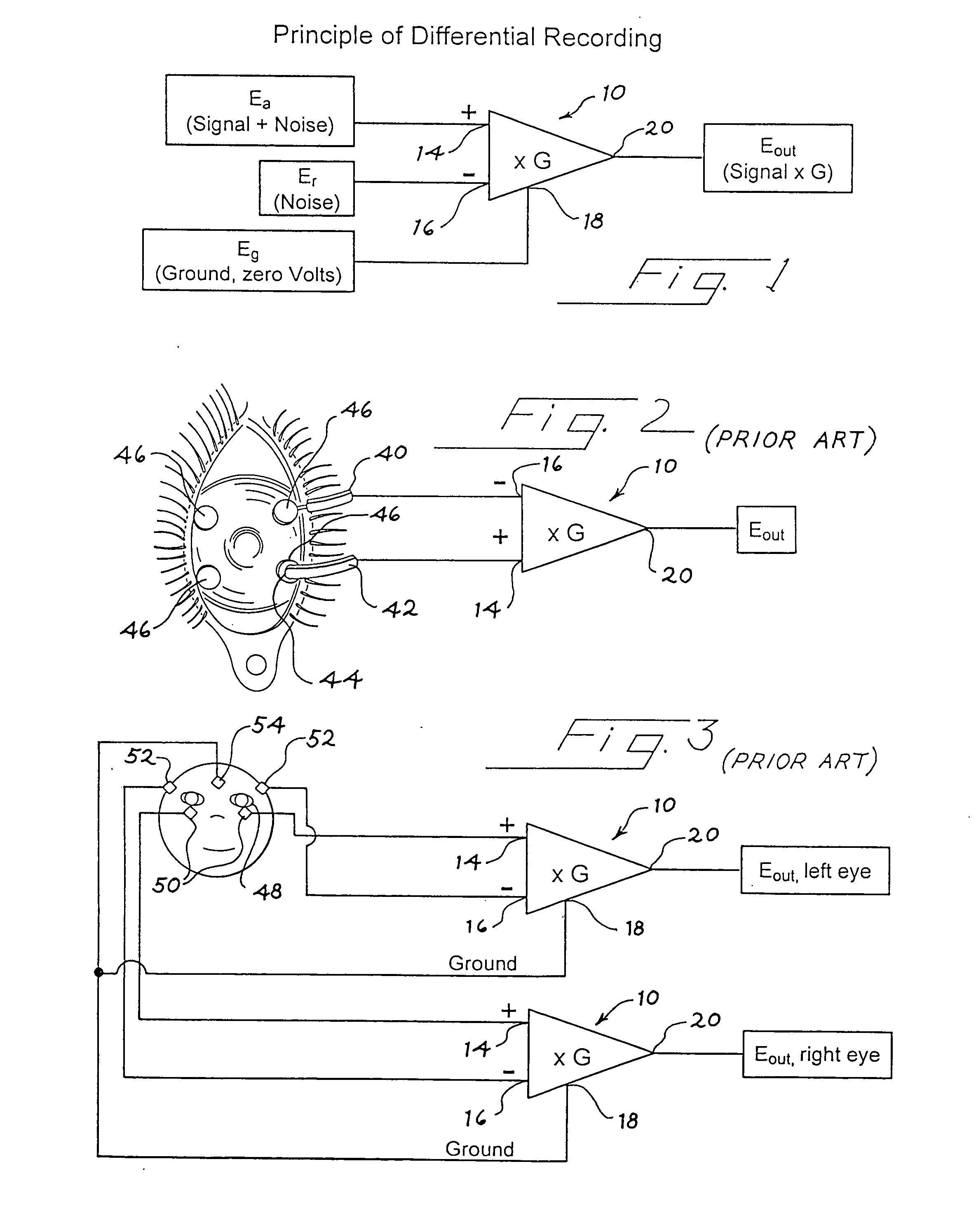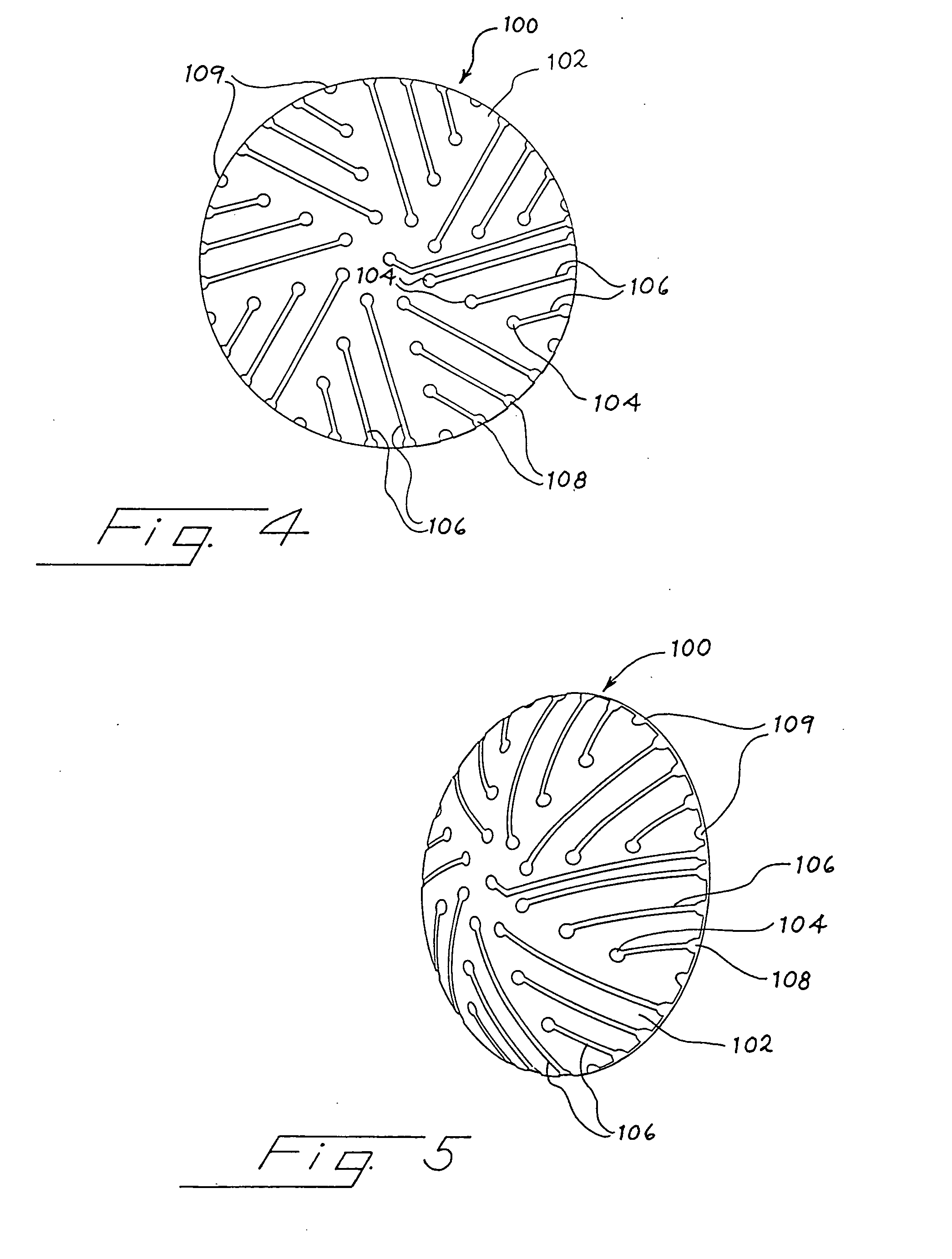Apparatus and methods for mapping retinal function
a retinal function and retinal potential technology, applied in the field of electrophysiological neuroimaging, can solve the problems of difficult to administer psychophysical tests to patients with very low vision, inability to administer psychophysical tests to animals, and inability to spatially uniformize the potentials on the eye surface resulting from bioelectric activity of the retina
- Summary
- Abstract
- Description
- Claims
- Application Information
AI Technical Summary
Benefits of technology
Problems solved by technology
Method used
Image
Examples
second embodiment
[0089]A second embodiment is similar to that described above, but where the contact lens extends past the corneal margin (FIGS. 6, 7, 8, 14) onto the sclera. In this embodiment, a spherical section of lens material with radius of curvature appropriate to fit the subject's sclera extends the lens past the corneal margin. In this embodiment, this scleral extension contains a plurality of recording electrodes. The contact pads associated with each electrode are present on the convex surface of the scleral extension, and preferably are connected to each electrode by way of an insulated conductive trace as described above.
third embodiment
[0090]A third embodiment consists of a contact lens appropriate to fit the subject's cornea (FIGS. 12, 13), or the cornea and anterior sclera (FIG. 14). FIG. 12 shows two views of a portion of a contact lens 500 adapted to include a plurality of recording electrodes. Panel A shows a top plan view and Panel B shows a side cross-section. Through-holes 502 connect the corneal surface 503 of lens 500 with the distal side 505 of the lens 500 at each recording electrode location. In this embodiment, the recording electrode position comprises a through-hole 502, into which a conductive wire, a conductive hydrogel, or a conductive liquid can be placed as the electrode. Through-holes 502 can be lined by a conductive material, which can be in contact with a conductive trace attached to a contact pad.
[0091]FIG. 13 shows a contact lens of FIG. 12 in side cross-section, showing connections of the recording electrodes 504 to amplifiers 506 via contacts 512 and wires 511. Each amplifier 506 includ...
PUM
 Login to View More
Login to View More Abstract
Description
Claims
Application Information
 Login to View More
Login to View More - R&D
- Intellectual Property
- Life Sciences
- Materials
- Tech Scout
- Unparalleled Data Quality
- Higher Quality Content
- 60% Fewer Hallucinations
Browse by: Latest US Patents, China's latest patents, Technical Efficacy Thesaurus, Application Domain, Technology Topic, Popular Technical Reports.
© 2025 PatSnap. All rights reserved.Legal|Privacy policy|Modern Slavery Act Transparency Statement|Sitemap|About US| Contact US: help@patsnap.com



